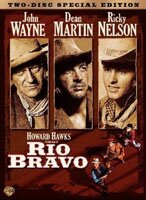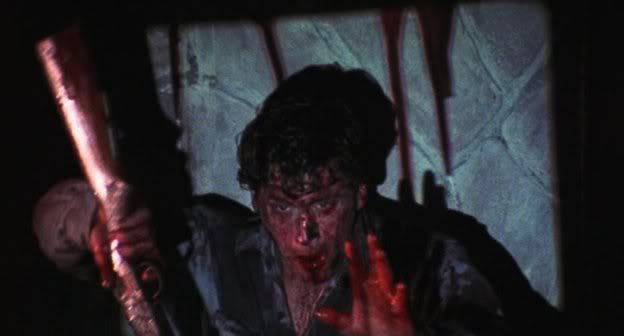Dir. Tobe Hooper
Starring: Marilyn Burns, Paul A.
Partain, Edwin Neal, Jim Siedow
It’s Halloween and so it is time
for a horror movie! Except I don’t really have any horror movies in the house
so a slasher flick will have to do. And it is the granddaddy of all slashers: The Texas Chain Saw Massacre. Even
before The Evil Dead this was one of
the earliest ‘video nasties’. The British Board of Film Classification only
cleared it for release in 1999, 25 years after it first came out.
“The film which you are about to see is an account of the tragedy which
befell five youths, in particular Sally Hardesty and her invalid brother
Franklin. It is all the more tragic in that they were young. But had they lived
very, very long lives they could not have expected not would they have wished
to see as much of the mad and macabre as they were to see that day. For them an
idyllic summer afternoon drive became a nightmare. The events of that day were
to lead to the discovery of one of the most bizarre crimes in the annals of
American history: the Texas Chain Saw Massacre.”
My first reaction upon watching
this much vaunted shocker was ‘What was
all the fuss about?’ Okay, it’s grisly and it’s gory – but I’ve seen worse.
The violence is sudden and any, shall we say, forensic activity is hidden from view. It hardly counts as ‘torture
porn’ in the same breath as Saw, Hostel or The Human Centipede. Rather than flesh being shredded The Texas Chain Saw Massacre is more
likely to focus upon a screaming mouth or a frantically-rolling eye.
The action takes place in Muerto
County, Texas. Graves have been defiled and a regular Mystery Machine of kids head out to ensure that their grandparents’
graves are intact. Upon leaving they have a run-in with a lunatic hitchhiker.
While the wait the fuel delivery to an isolated petrol station they decide to
visit the abandoned home of their grandparents. They then discover that the neighbours
ain’t friendly…
Writer and director Tobe Hooper
creates a very threatening environment. The scene is set from the opening
voiceover. The very first images we see are of a memorial fashioned from
corpses. This is an America that is going to the dogs: defilement, crime,
natural disasters and war fill the news. In Texas an unforgiving sun bakes the
land. There is a constant white noise, either provided by the soundtrack or
from humming generators, clucking chickens, chirping chickens. Everyone is on a
knife’s edge. Literally in the case of the hitchhiker (Edwin Neal). It was all
enough to make me feel rather unsettled before we had even caught sight of the
monstrous Leatherface (Gunnar Hansen).
And Leatherface is monstrous. He
is barely human, a hulking idiotic brute, raw strength and power. Apart from
swinish squeals he is silent and his face is unseen behind hand-stitched masks
(prefiguring Jason Vorhees’ hockey masks from the Friday the 13th franchise). He seemingly keeps the
corpses of his grandparents upstairs like Norman Bates in Psycho. He does use more
modern technology – not just a lump hammer but also the chain saw of the title
(and that is a ‘chain saw’ rather
than a ‘chainsaw’ – the technology
was not yet in common parlance). The lipstick on his second mask is even more
frightening as it implies some form of sexual deviance. The hitchhiker
obviously attracts some sort of thrill from drawing blood and interfering with
corpses. Cannibalism is the least of this family’s deviancies. To them all
flesh is grass. Franklin Hardesty (Paul A. Partain) repulses his friends early
on in the film by talking about cattle-slaughtering processes. To Leatherface
and Co humans are just one more source of meat. Their house is littered with
bone and flesh from cow, horse, bird and man. As the Hitchhiker explains, “My family’s always been in meat.”
 |
| Leatherface made short work of the cloud |
Is The Texas Chain Saw Massacre exploitative? Well, yes – but less so
than many films today. In horror movies and particularly slasher flicks it is
always the pretty young girls that suffer most. I guess this can be put down to
residual misogyny on the part of directors and horror fans – who are, after
all, mostly male. In The Evil Dead
Cheryl gets raped by a tree. In Slither
Starla wanders around in a negligee. In The
Texas Chain Saw Massacre the three boys die suddenly and quickly; the two
girls suffer worse fates. Contrary to the voiceover talking about the
indignities heaped mostly upon Sally and Franklin Hardesty it is really Pam (Teri
McMinn) and Sally (Marilyn Burns) that suffer the most.
Despite this the film is
watchable. To be honest I think tastes have moved on (of maybe ‘degraded’)
since 1974; this means that there is little that is profoundly shocking about
the film to a modern eye – except actually how little gore there is.
What have I learnt about Texas?
Despite the film’s claims that
this is a true story, it isn’t. There was never a genuine massacre with a chain
saw in Texas. But there are elements of Texan life that can be discerned from
the movie. There is the Spanish influence. This can be seen in Spanish names of
the county (Muerto – ‘death’) and the sheriff (Jesus Maldonado).
There is the terrain – baking hot plains under a dazzling sun, dried up
waterholes and fields of sunflowers. There is the beef – cows and
slaughterhouses. And there is the food – barbecue. Best not enquire too much
about what meat is under all that sauce however…
Can we go there?
The locations are fictitious.
There is no town in Texas called Newt and there is no county called Muerto.
Filming actually took place north
of Austin in Round Rock. A development called La Frontera
now occupies the site. You can, however, still visit the home of the inbred
cannibals – hell, you can even have a meal there! The building was disassembled
and relocated to Kingsland in Llano County. In the grounds of the Antlers Hotel and Historic Railroad District can be found the Junction House Restaurant. This is the ‘Texas Chainsaw House’.
Other locations include Bagdad Cemetery in Leander and Bilbo’s Texas Landmark
on State Highway 304 in Bastrop which was the gas station without any gas.
Overall Rating: 3/5
















